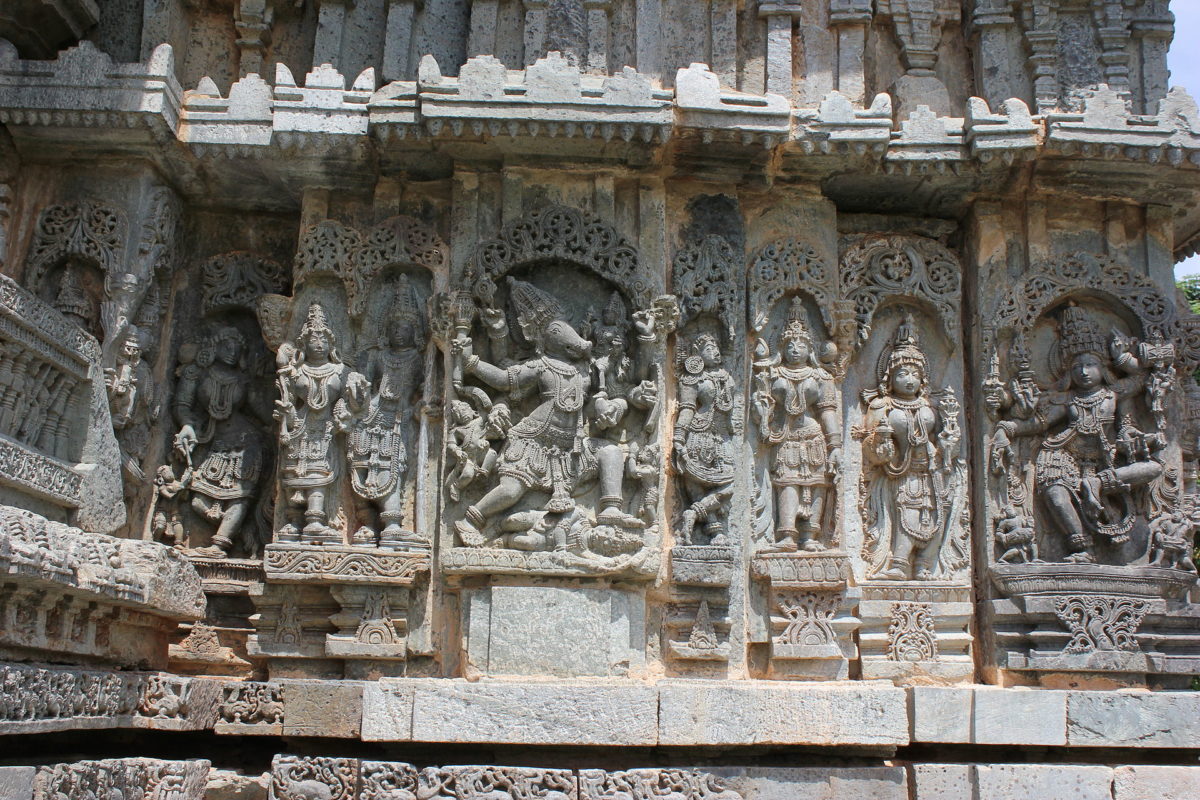ॐ श्री गुरुभ्यो नमः ॐ श्री शिवानन्दाय नमः ॐ श्री चिदानन्दाय नमःॐ श्री दुर्गायै नमः
Source of all Images in this Blog-post : Google Images : ‘Google Image Search’ will reveal the multiple sources of every single image shared here. For more details, kindly see ‘Disclaimer‘
Kedareshwara Temple is a Hoysala era architectural marvel in the historically important town of Halebidu, in the Hassan district of the state of Karnataka in India.

It is located a short distance away from the famous Hoysaleswara Temple. The temple was constructed by Hoysala King Veera Ballala II (r. 1173–1220 A.D.) and his Queen Ketaladevi, and the main deity is Ishwara (another name for the Hindu God Shiva).

The temple is protected as a monument of national importance by the Archaeological Survey of India
Temple Plan :
According to art historians, the temple was constructed before 1219 A.D and is constructed with Soap stone. The usage of Soap stone was first popularized by the Western Chalukyas before it became standard with the Hoysala architects of the 12th and 13th centuries.

The temple stands on the platform called Jagati which is typically five to six feet in height and which can be reached by a flight of steps.
This is a Hoysala innovation. Hoysala temples normally don’t provide a path for circumambulation (Pradakshinapatha) around the inner sanctum (Garbhagriha).

However, the platform provides this convenience in addition to giving the onlooker a good view of the wall relief and sculptures.
The outlay of the main shrine (Vimana) is star-shaped with two smaller shrines that have perforated windows (called Jali meaning sieve) on the sides.

Star-shaped or ‘staggered square’ or ‘cross in square’ temple plans are quite common among Hoysala constructions creating multiple projections and recesses in the outer walls.

In these projections, the Hoysala architects created repetitive decorative sculptures and reliefs called ‘architectural articulation’.

Since the temple has three shrines, it qualifies as a Trikuta, a three shrined structure. Often in Trikutas, only the central shrine has a tower while the lateral shrines are virtually hidden behind the thick outer walls and appear to be a part of the hall itself.

Despite being a Shiva temple it is well known for its friezes and panel relief that bare depictions from both the Shaiva and Vaishnava legend.
The three sanctums are connected to a staggered square central hall (Mahamantapa) by individual vestibules called Sukanasi.

A porch connects the central hall to the platform. The base of the temple wall (Adhisthana) around the common hall and the two lateral shrines consist of mouldings, each of which is treated with friezes in relief that depict animals and episodes from the Hindu sacred lore (Puranas).
This is called horizontal treatment. The image of the deity of worship is missing in all three sanctums and the superstructure over all three shrines are lost.
Some noteworthy pieces of sculpture worthy of mention are the dancing Bhairava (a form of Shiva), Govardhana (Hindu God Krishna lifting a mountain), God Vishnu as Varadaraja, and a huntress.
